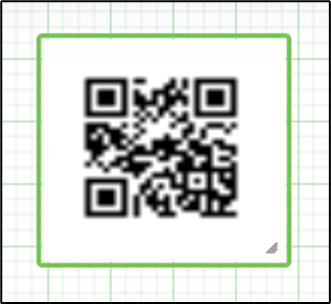Description:
This widget generates a variety of barcodes for the provided item details.
Inputs
- FormID - name of widget generated by FlowWright (read-only field)
- Barcode Text - Provide sample barcode text here
- Select barcode type - Select any one barcode type from the drop-down list here
- Text location - Select the text location to be placed from the drop-down list here
- Barcode Height - Provide the required barcode height in pixels
- Barcode Width - Provide the required barcode width in pixels
- Hide - Select the checkbox to Hide (tick mark)
- Save button - Save the input values
- Delete button - Remove this form widget from the designer page
- Close button - Close the input popup window
Design:

Example:
Let’s build and execute the “BarcodeDef” example.
- Create a Form definition called “BarcodeDef.” Navigate to Forms - Definitions on the left pane to create. On the Form Definitions page, select the Actions - Create menu option. Check with your FlowWright administrator if you don't have access to generate Form Definitions.

- Drag a "BootstrapGrid, Label, Barcode, and Submit” control to the canvas and arrange them as shown below.

- Double-click the “Barcode” widget to configure the “Settings” properties. The application provides the control's name. Select the barcode type from the drop-down list. Provide the location where the text will be displayed. Provide the pixel value for barcode height and width. Provide the text to be represented as a barcode. Select the checkbox to hide the control during runtime. Click the Save button.

- Save the Form definition. Select Actions - Create Form Instance menu option. Generate a new Form Instance and select the check box to edit this Form Instance. Check with your FlowWright administrator if you don't have access to generate Form Instances.

- The Form is rendered to the user as shown below. Scan the barcode to navigate to the website in this context.

Definition Sample:
You may download the sample definition(s) from the link here and later import them (drag-and-drop) to your FlowWright Process Definition (XML file) or Form Definition (HTML file) page.
Note: Please verify and complete the process steps for any missing configurations, such as file path references and database connections, after import. Then, save the definition to confirm the changes.
Click here to download the sample file.